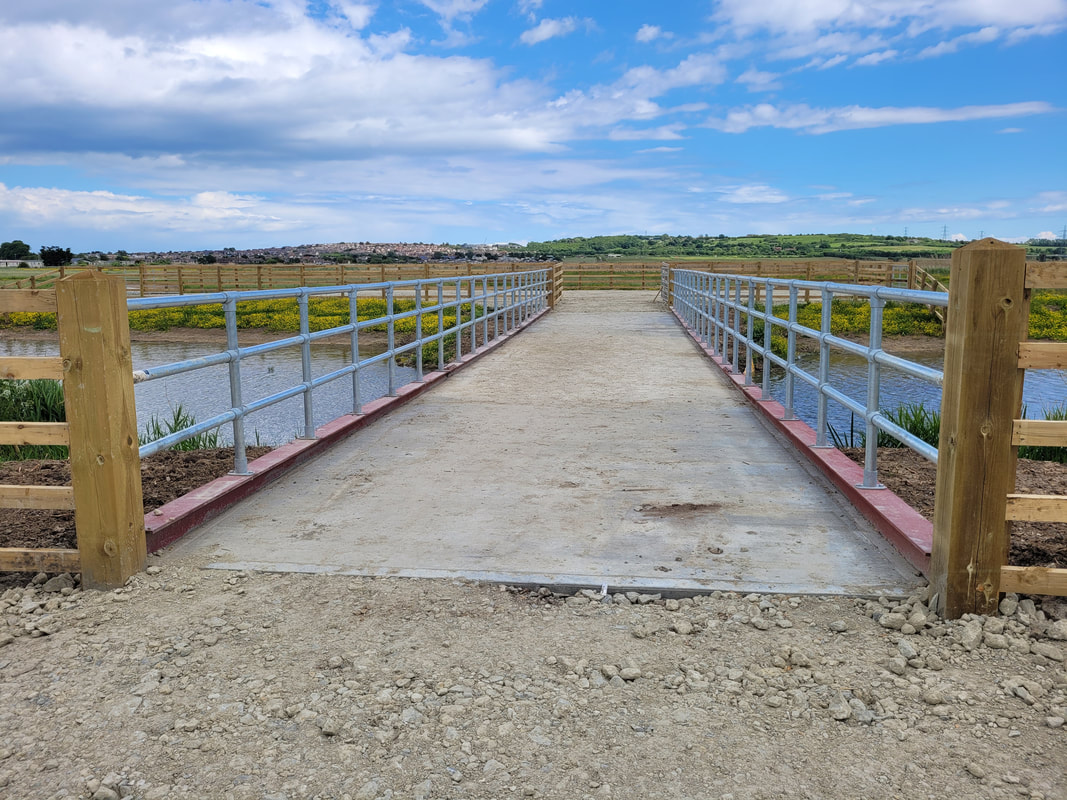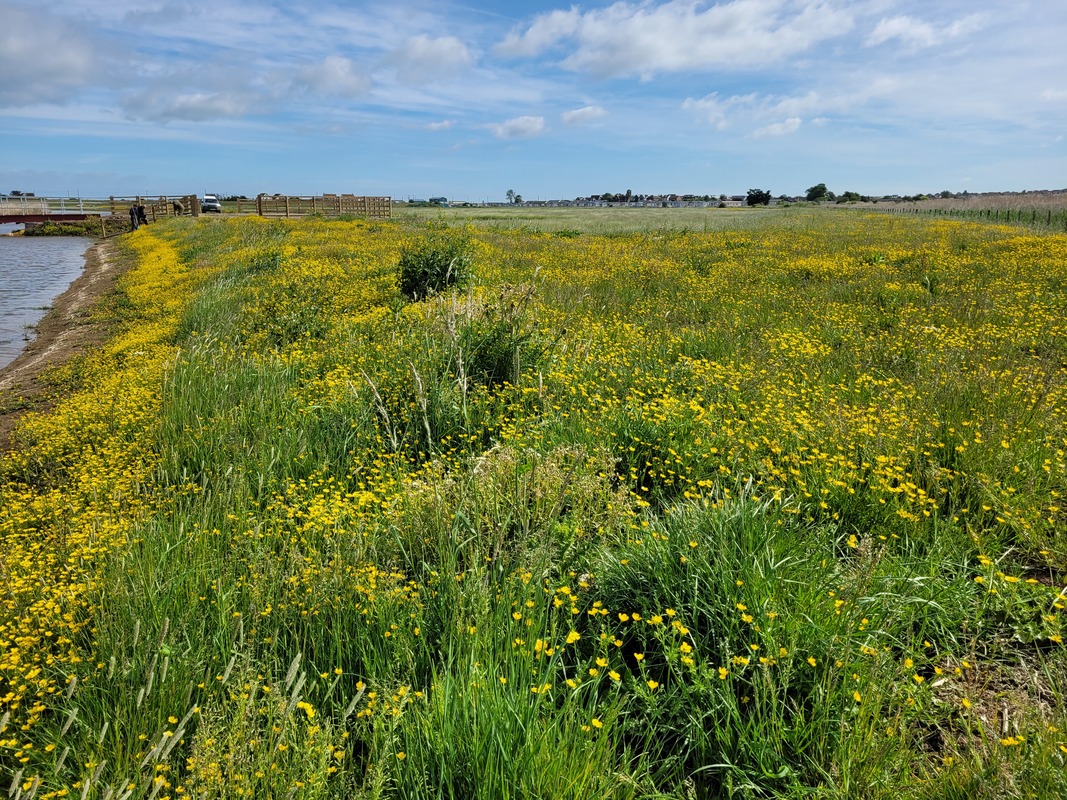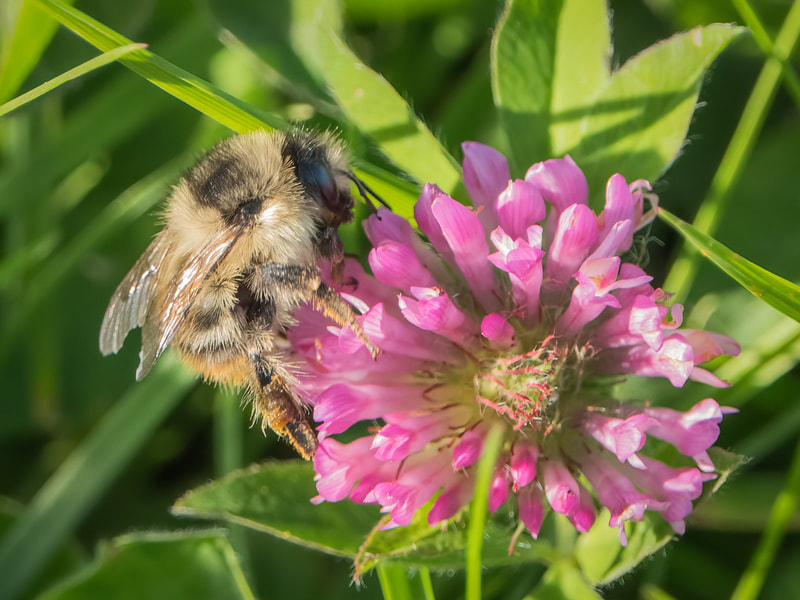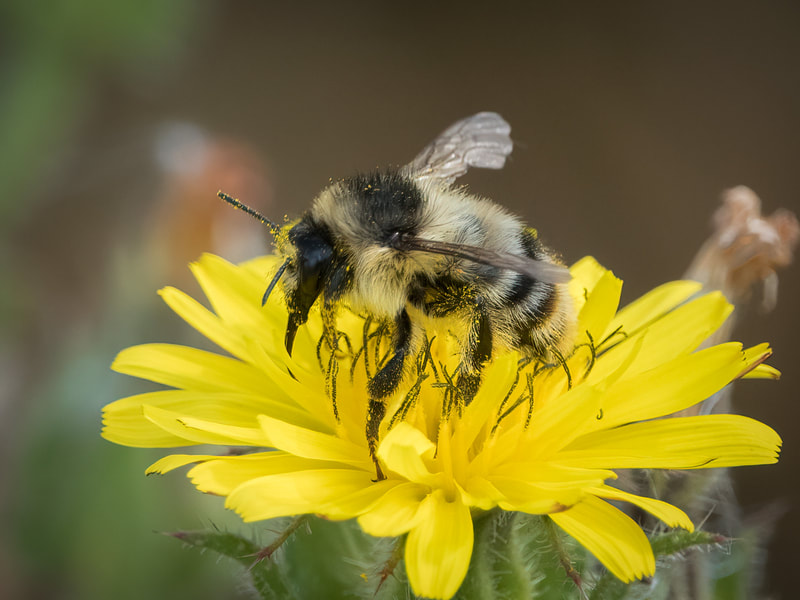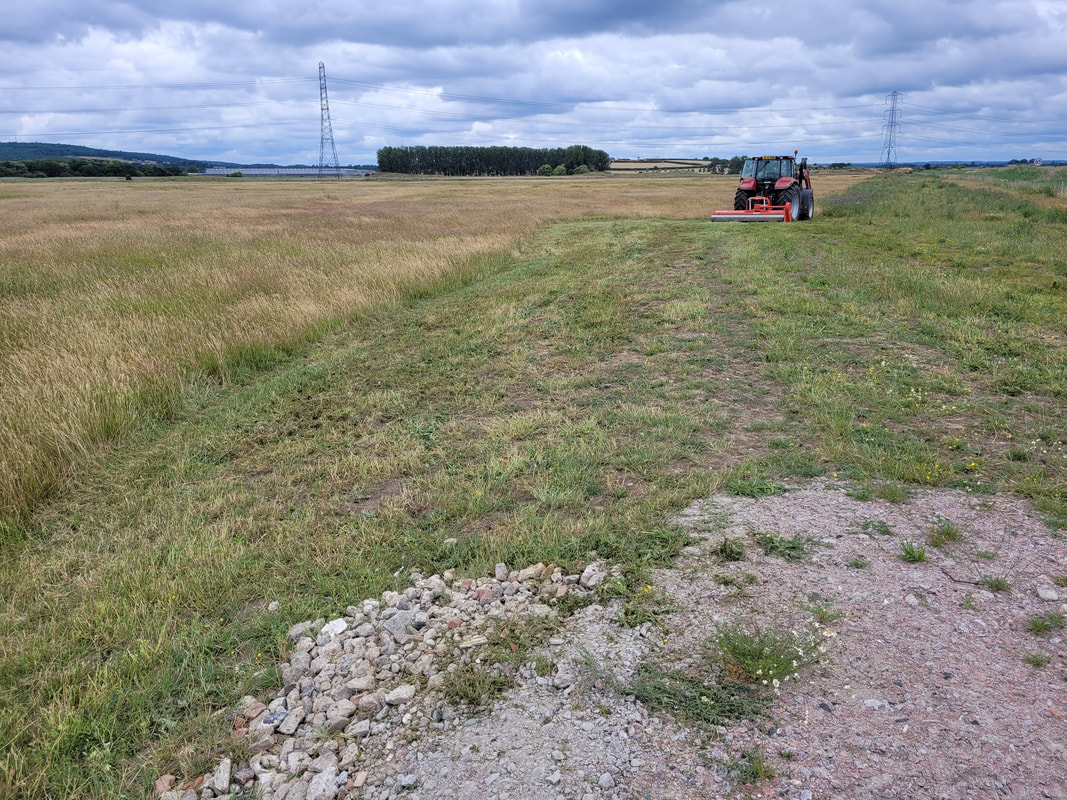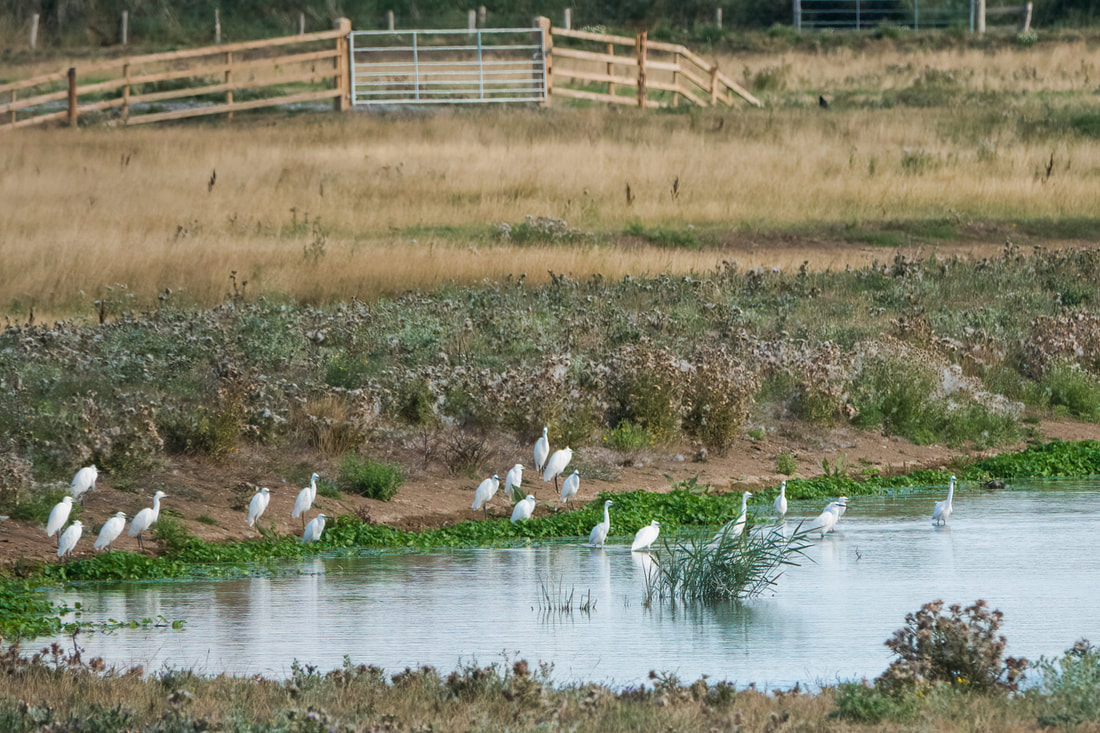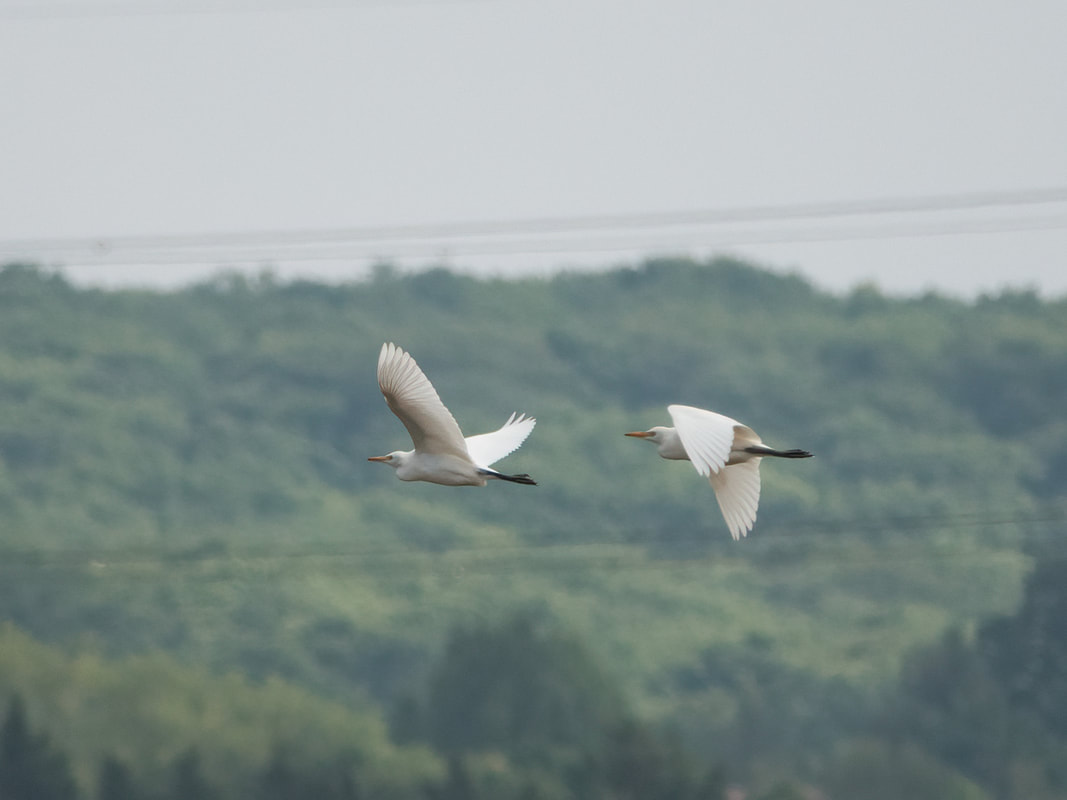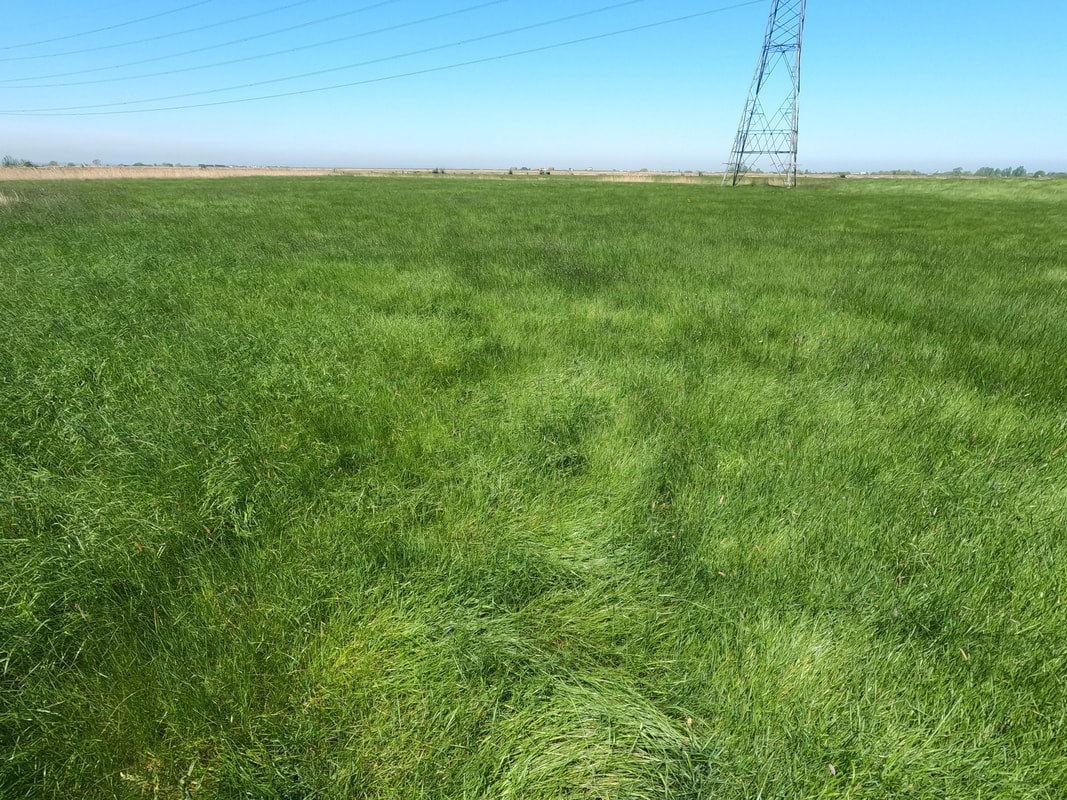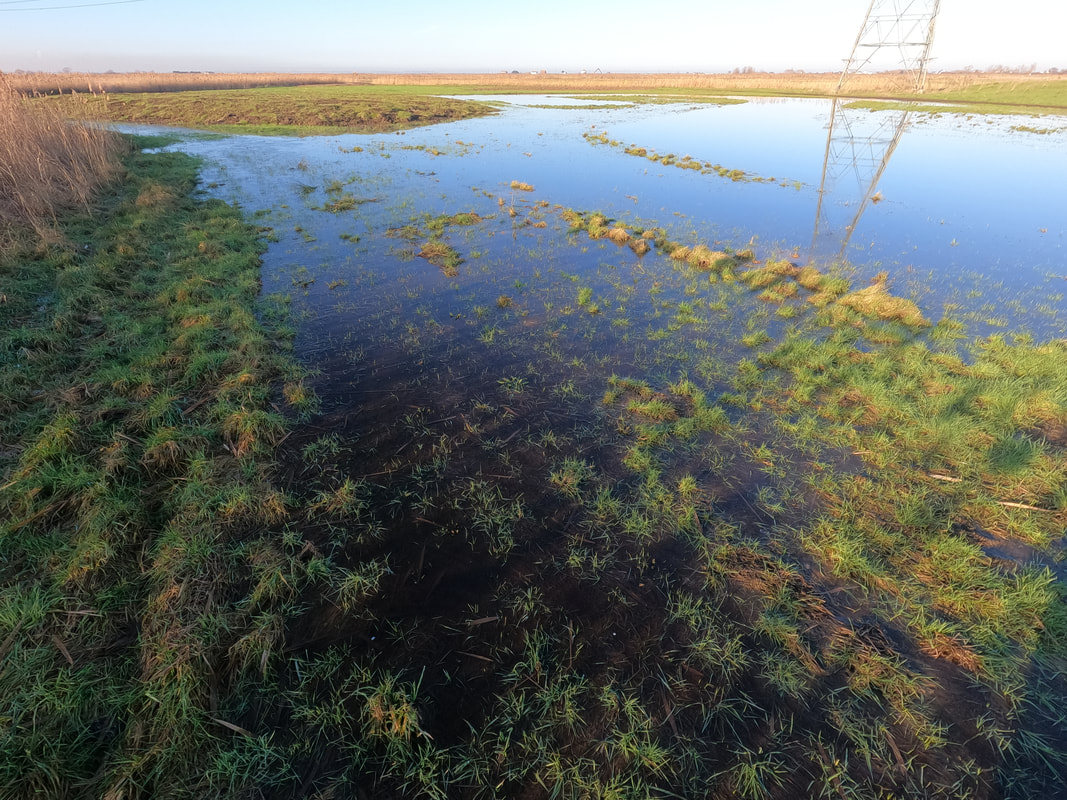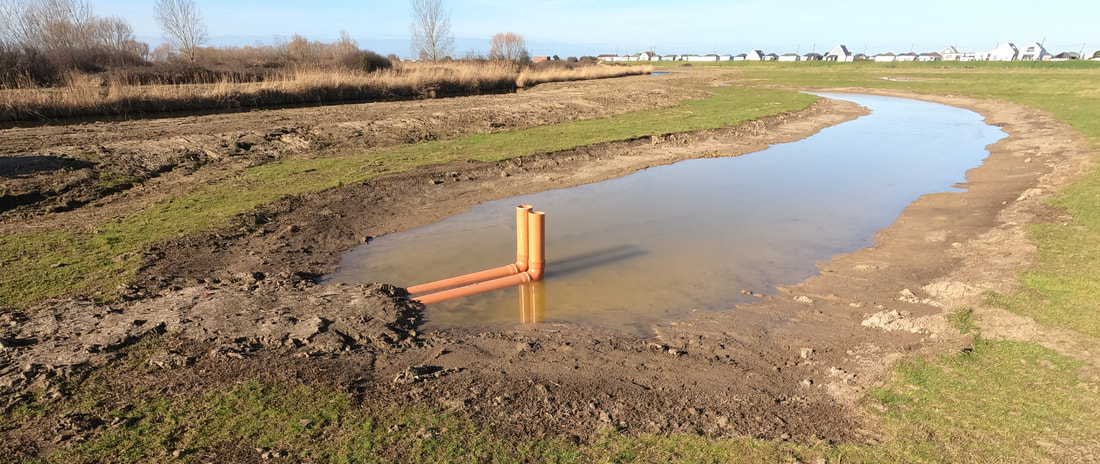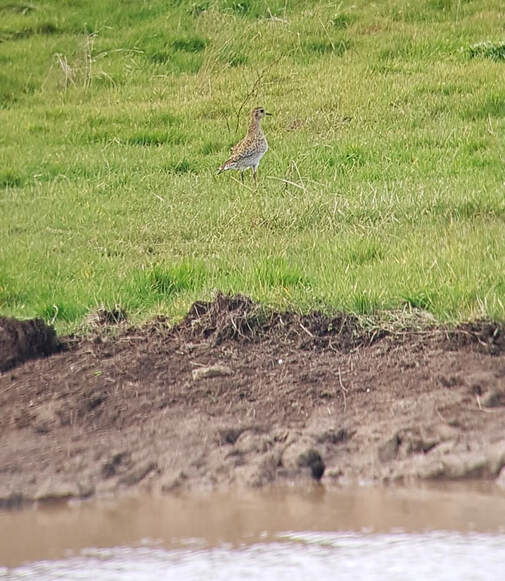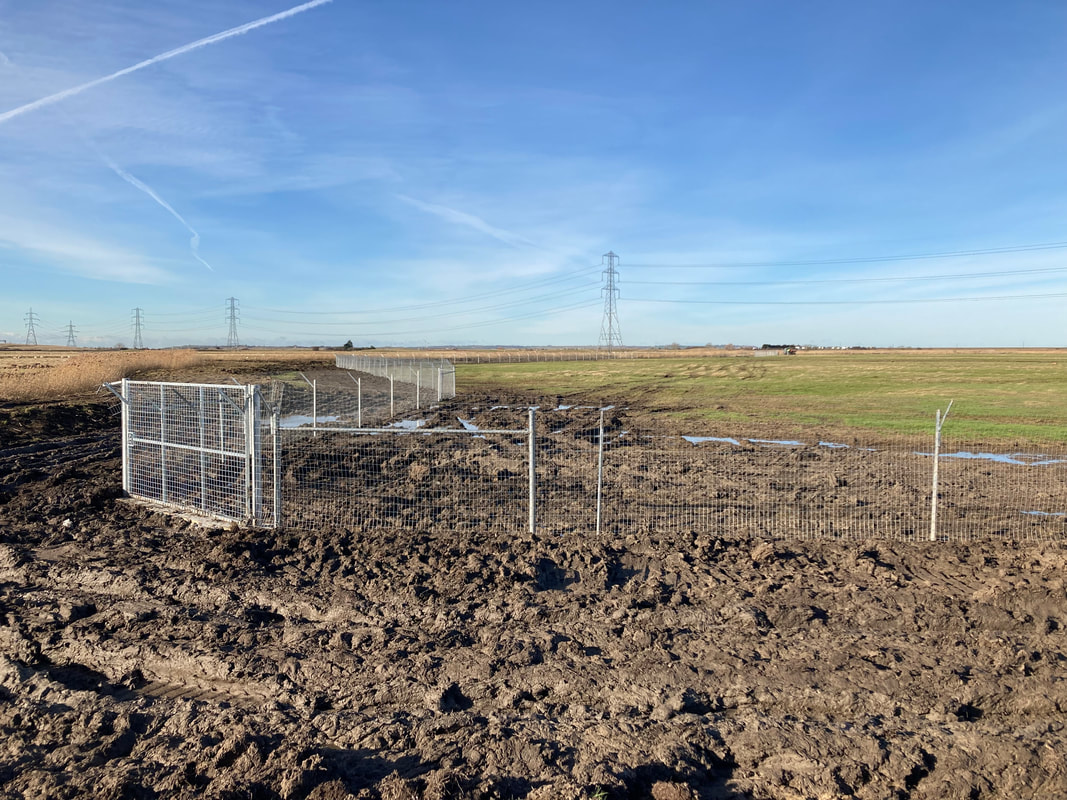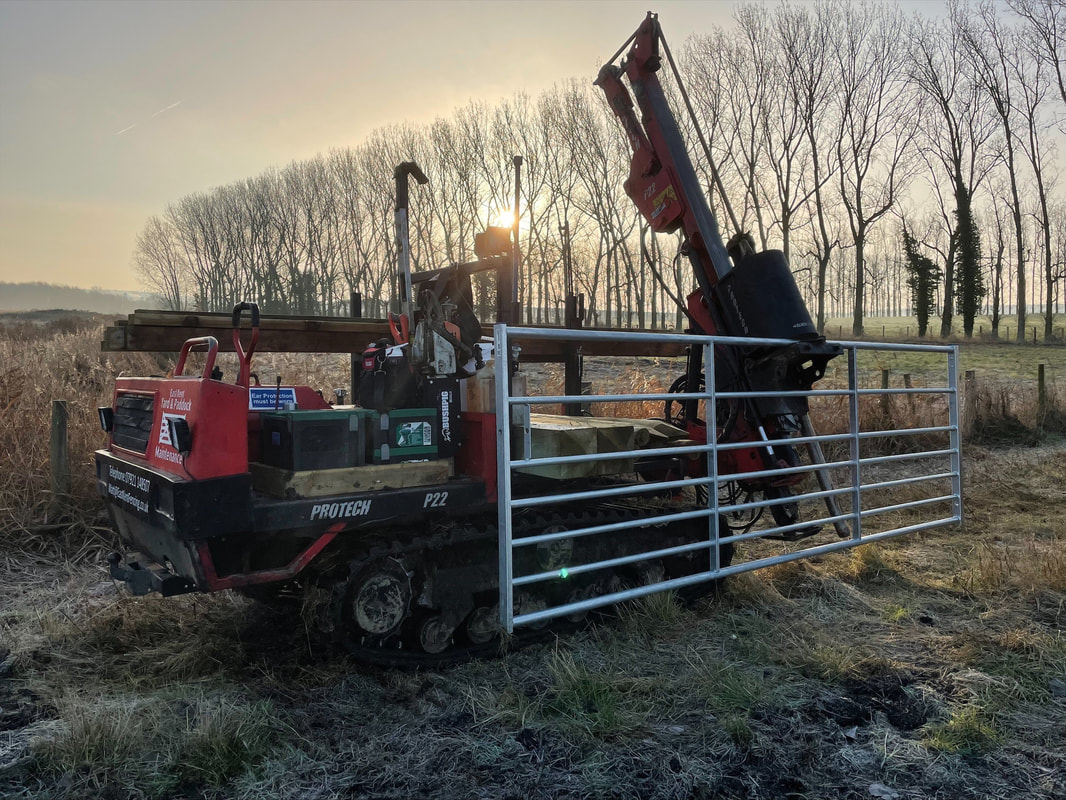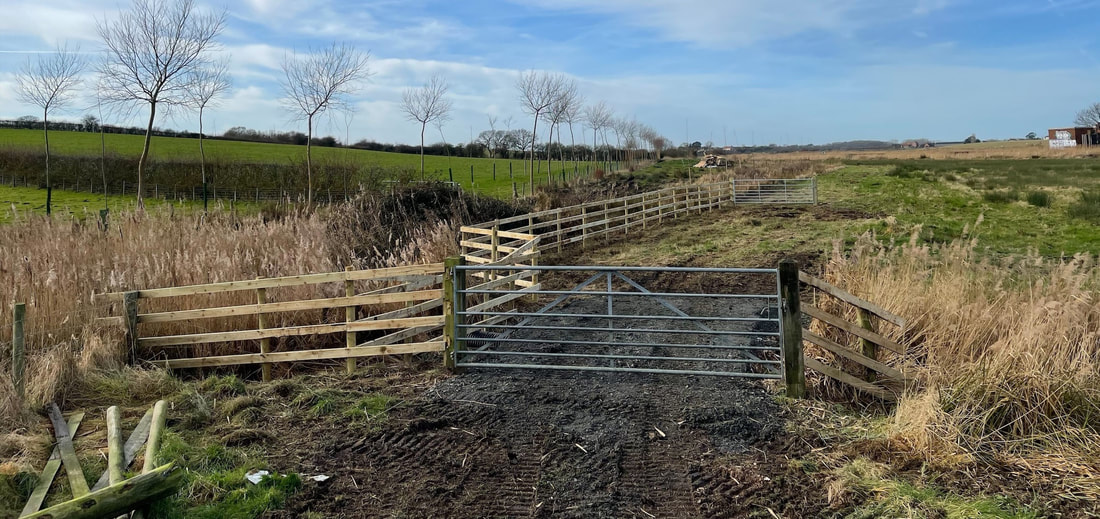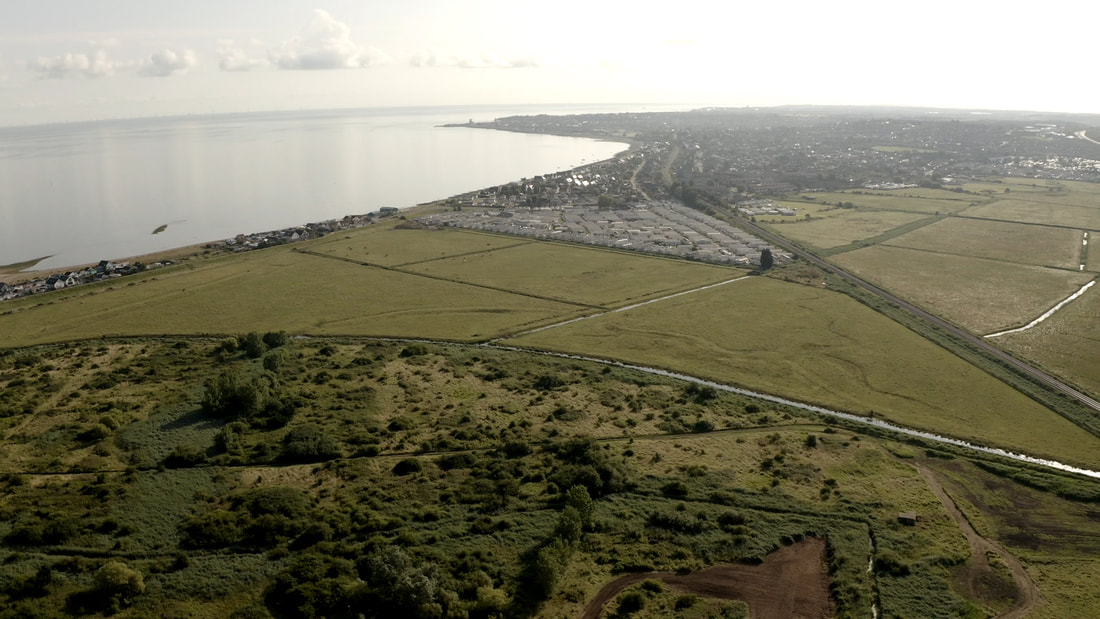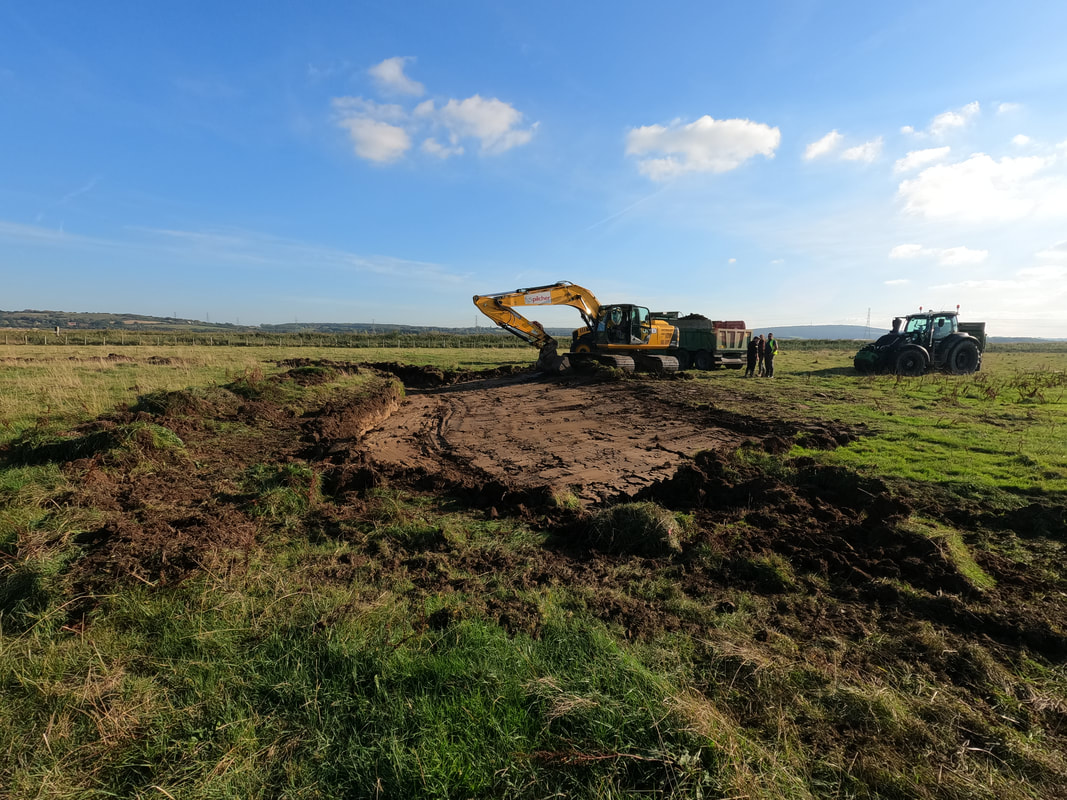|
By Audrey Jost - Assistant Warden at RSPB Seasalter Levels and Blean Woods May 2022 saw the completion of the habitat restoration works at Seasalter Levels. This massive project enabled the creation of 40 crossings/dams, 50 bunds/plugs, 20 islands and nearly 120,000 m2 of rills and scrapes, connected to waterways via culverts and elbow pipes. Over 2,000 m of ditches were restored and 3 trailer mounted water pumps were purchased to replace defective trash pumps, with solar pumps planned to be installed in 2023. 4,000 m of stock fencing and 3 new livestock corrals also were installed, allowing us to introduce large-scale grazing across the reserve. The addition of a bridge linking Alberta and Whitstable Bay Estate, in the north of the reserve further increased connectivity across the site. Spring brought colourful changes to the site as bunds and islands transformed from dark brown to bright yellow with the apparition of bulbous buttercups. This attracted lots of pollinators, with 365 bumblebees recorded by our volunteer surveyor in Alberta, our highest number since starting in 2018! The highlight of this survey was the record of 5 shrill carder bees, one of the UK’s rarest bumblebees. Several shrill carder bees were also spotted on the other side of the bridge in Whitstable Bay Estate, indicating that the species is slowly colonising the site. Unfortunately, we were unable to efficiently control water levels and flood fields this year due to the inability to obtain an abstraction licence. The licence acquisition is however planned for 2023, with a year’s worth of water levels, salinity and flow rates monitoring required by the Environment Agency. Despite all this, the breeding season at Seasalter Levels showed encouraging results, as a small part of the site retained rainwater naturally. Species that successfully bred on the reserve included lapwings, little grebes, pochards, shovelers and gadwalls! After breeding season was over, we carried out habitat management tasks, putting our new tractor into good use as we undertook topping across the site. Despite the site quickly drying out due to the drought and the impossibility of pumping, many different species visited the Levels throughout summer. They ranged from waders such as greenshank, redshank, green and common sandpipers to raptors such as hen harrier and hobby. Rarer birds such as purple heron and glossy ibis were also amongst the reserve’s visitors. We even had a surprise bittern in the reedbed! The remaining water pockets of the site are not to be outdone. The newly created shelf in the main ditch between Alberta and Whitstable Bay Estate is a good example where up to 30 little egrets are seen on a regular basis! If you’re lucky, you may even spot cattle egrets amongst them! 5 months after the official end of the habitat works, the restoration of Seasalter Levels is still a work in progress. Changes are definitely happening but it will take time for the reserve to become a fully functional wetland. Stay tuned for future updates!
Links to the previous blogs on the restoration of Seasalter Levels: Part One and Part Two
0 Comments
By Audrey Jost - Assistant Warden at RSPB Seasalter Levels Works are coming to an end at Seasalter Levels. Machines are slowly leaving the site whilst rills and scrapes fill up with water, making the landscape unrecognisable from 6 months ago. Five hydrological units have been created, where water levels will be controlled by mechanical pumps that extract water from the surrounding ditch network and disperse it into the fields in order to provide the right habitat conditions for breeding waders. The changes in the landscape provided immediate results wildlife-wise. Lapwings are now a regular sighting across the site, with a flock of 142 observed during the last wetland bird survey. Redshank, wigeon, curlew, green sandpiper, teal and shoveler are further examples of recently seen species. We even spotted a juvenile golden plover! As most breeding wetland birds are ground nesters, they are very vulnerable to predation, notably by foxes. In order to boost the fledgling rate of youngs, we installed a 1.8 kilometre long anti-predator fence on part of the reserve. The fence is buried in the ground and cranked towards the outside at the top to prevent predators from digging and climbing respectively. In addition to the anti-predator fence, the infrastructure and associated fencing installation to allow cattle grazing of the site is in progress and is due to be completed by March 2022. We also increased the number of corrals from 1 to 4, which will help with cattle movement across the site. As the project is wrapping up, it is giving way to a time of recovery and monitoring. It has been an intense year for the reserve and it will take a few more years for it to fully reach its potential. A huge thank you to our funders, the reserve team and the contractors for making this project a reality!
Blog by Audrey Jost - Assistant Warden at RSPB Seasalter Levels Seasalter Levels is an RSPB reserve located in the South East of England, north of Canterbury. Acquired in 2007, the Levels were first constituted of only one unit named LNR (Local Nature Reserve). Since then, thanks to the efforts of the Seasalter Partnership (comprising RSPB, Natural England, Canterbury City Council and Swale Borough Council), the Levels have expanded to include four new management units (Whitstable Bay Estate, Monkshill, Alberta and Vikings Estate), increasing its overall size from 71.5 ha to 290 ha. Constituted of mostly lowland wet grassland habitat, the Levels have, over the years, experienced a lack of appropriate management, leaving the area in poor condition for breeding waders and wintering wildfowl. Thanks to funding from the Green Recovery Challenge Fund and the EU LIFE project, a large-scale restoration project of 228 ha of the reserve was able to be put in motion. The project includes the creation of new topographic features aimed at improving the habitat for wildlife, particularly for wading birds such as lapwing and redshank, respectively classified as Red and Amber under the UK Red List for Birds (2015). Features created will help manage and retain water in fields, resulting in shallow pools with muddy margins that provide suitable habitat for wading birds to forage for invertebrates in soft, damp soils. The features include: Rills: Meandering channels varying in depth that retain water for a longer period than adjacent grassland. They are arranged in a branching structure supplying water from the perimeter ditches to the middle of fields. They also provide long muddy margins, increasing the feeding area for wading birds. Scrapes: Shallow depressions with irregular outlines and gentle slopes that seasonally hold water, supporting a rich invertebrate life. Ideal for redshank, that prefer shallow pools of water for feeding. Bunds: Acting as a barrier to minimise water runoff, earth bunds increase water infiltration in the soil. Long, ditch-side bunds also provide an opportunity for water vole colonisation by maintaining dry banks when the water levels are at their highest. Islands: Low, flat features that sit higher than peak water levels and provide refuge for waders and wildfowl from nest flooding and give safe spaces for winter roosting. The works, that officially started in September 2021, also include the creation and repair of crossing points and culverts to allow fine water level control. Ditch enhancements and reprofiling of existing banks will provide niche habitat for water voles and aquatic invertebrates. Whilst it is still a work in progress, changes on site are becoming more and more noticeable, and not only to the human eye! To date, restoration work has been completed on two out of the four units. As we progress, we will start to introduce large scale grazing across the reserve that will entail the installation of gateways, fencing and a livestock corral. Grazing is an essential part of reserve management as a short grass sward gives ideal habitat for ground-nesting lapwing. By grazing with cattle and flooding the fields, new plant communities will develop, including wildflowers such as red clover that provide a nectar source for bumblebees like the endangered shrill carder bee, which has a local population on the nearby sea wall. Further updates will come as work continues. |
Archives
April 2024
Categories
All
Photo credits: Oystercatcher by Katie Nethercoat (rspb-images.com)
LOTE Logo credits: Saskia Wischnewski |

